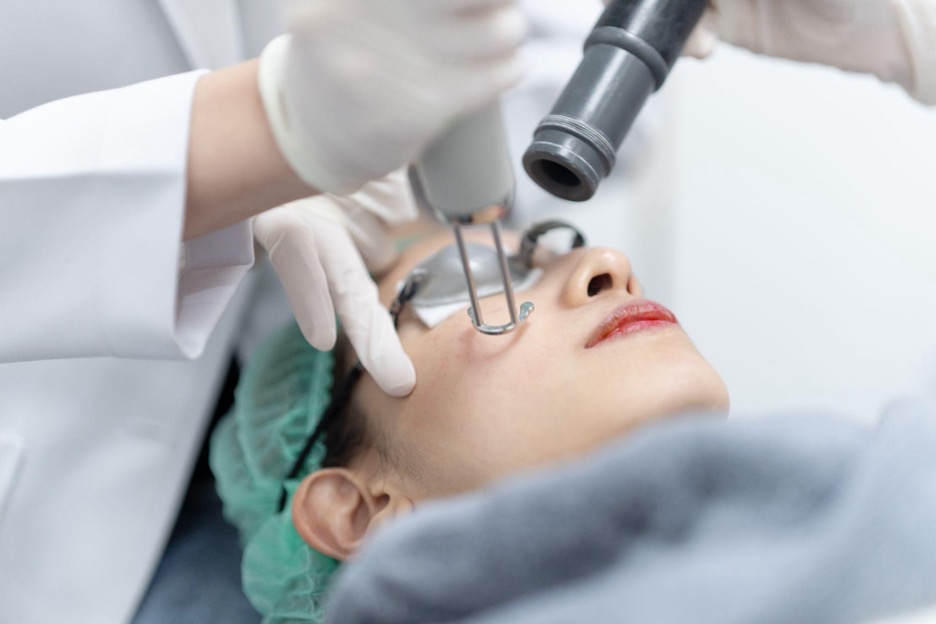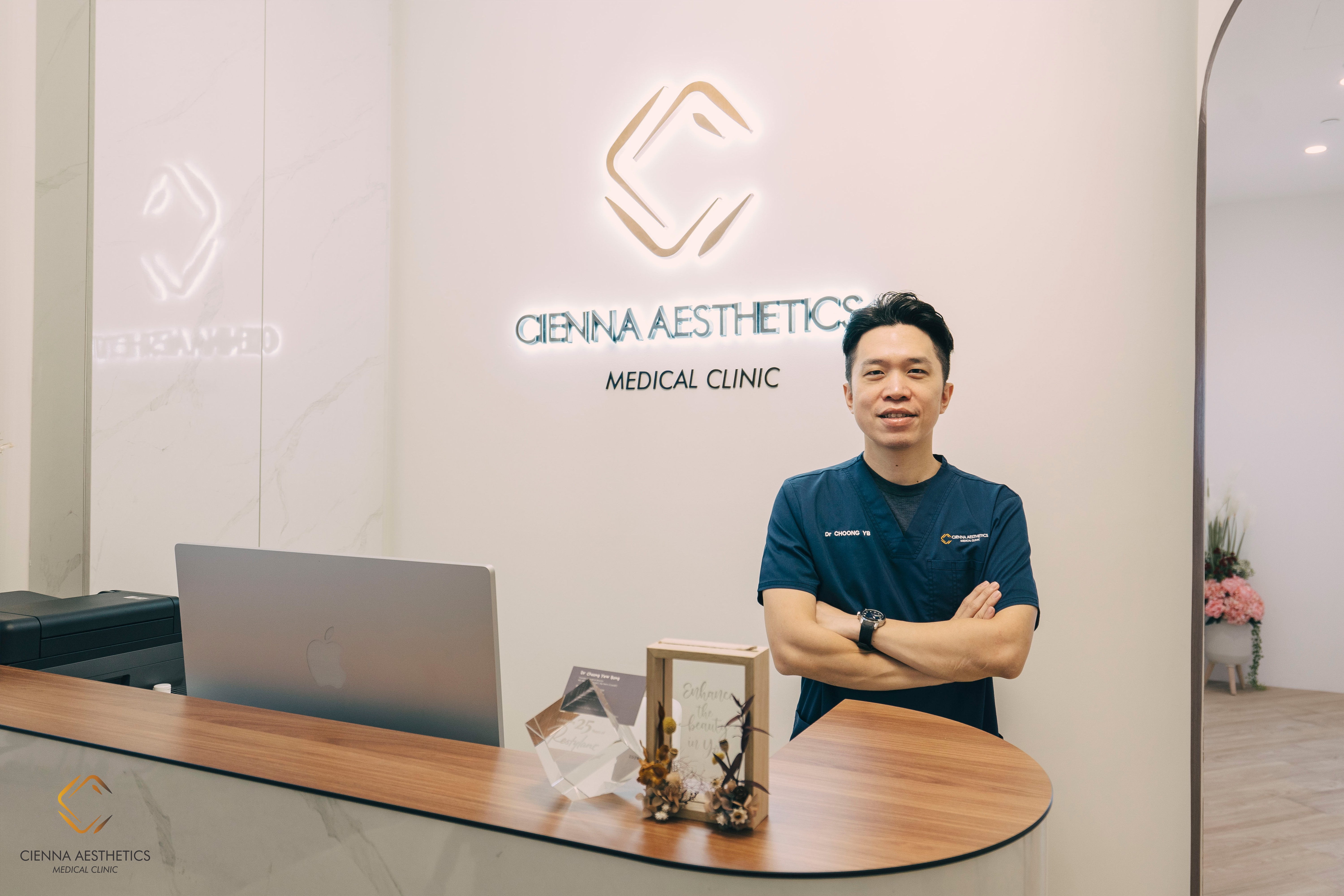Aesthetics
Understanding Scars & How They Can Be Treated
Explore the world of scars and advanced treatments at Cienna Aesthetics Medical Clinic. From atrophic to contracture scars, uncover solutions like Pico laser and microneedling. Understand the stories scars tell, empowering yourself with knowledge for informed choices and embracing a compassionate approach to redefine your path to self-confidence and well-being with Cienna Aesthetics and Dr. Choong's skilled team.

While we’ve all dealt with scars throughout our lives – whether from an accident, surgery or even acne, they can often create anxiety and distress. The physical reminder of a past injury or trauma can influence how people perceive themselves, how others perceive them, and affect their self-confidence and body image. With society’s emphasis on flawless skin, these feelings can be further amplified, exacerbating the emotional toll that scars can take on one's mental well-being.
However, given the current technology, there are various options such as lasers, microneedling, collagen stimulators and more for treating scars, minimising their appearance so that they no longer have to be a source of emotional pain.
In order to understand how to treat them, it is important to first important to know about the different types of scars.
There are generally four main types of scars:
- Atrophic
- Keloid
- Hypertrophic
- Contracture scars
- Stretch marks
Atrophic Scars
Image by Freepik
Typically, small and sunken, atrophic scars are a result of a loss of tissue which creates depressions or indentations on the skin’s surface. Atrophic scars are often caused by conditions like inflammatory acne which damages collagen beneath the skin's surface, leading to a loss of tissue. There are several subtypes of atrophic acne scars, including icepick scars, boxcar scars, and rolling scars, each presenting unique characteristics.
Keloid Scars
Image by tirachard on Freepik
Keloid scars are a distinctive type of raised scar that extends beyond the boundaries of the original wound or injury. They can grow larger than the initial trauma site, creating thick, raised, and often irregularly shaped formations on the skin. These scars develop when the body produces an excess amount of collagen during the healing process, leading to the overgrowth of scar tissue. Keloids can arise from various sources, including surgical incisions, traumatic injuries, burns, acne lesions, or even minor skin injuries. They tend to be more common in individuals with a genetic predisposition to keloid formation. Unlike other types of scars, keloids can continue to grow over time and may cause discomfort, itching, or pain.
Hypertrophic Scars
Hypertrophic scars, distinguishable by their raised and red appearance, are a type of scar that forms at the site of a wound or injury. Unlike keloid scars, hypertrophic scars remain confined to the area of the initial trauma and often appear thick and raised above the surrounding skin. They develop due to the overproduction of collagen during the healing process, leading to an excess of scar tissue. Hypertrophic scars are usually caused by surgical incisions, traumatic injuries, burns, and even severe acne lesions. While they are typically not as extensive as keloids, hypertrophic scars can still cause discomfort and may be accompanied by itching or tenderness. The red colouration of these scars is often due to increased blood flow to the affected area during the early stages of healing.
Contracture Scars
Contracture scars are a unique type of scar that develops usually when the skin is damaged by burns. These scars are characterised by the tightening and constriction of the skin, often leading to a significant reduction in mobility. Unlike other scars that may primarily affect the skin's surface, contracture scars extend deeper, impacting the underlying tissues.
Burns, especially those of a severe nature, can cause the skin to tighten during the healing process, resulting in contracture scars. These scars can be particularly challenging as they not only alter the skin's appearance but may also limit joint movement and functionality. Contracture scars can form on any part of the body affected by burns, and their severity depends on factors such as the extent of the burn injury and the specific location on the body.
The consequences of contracture scars extend beyond physical discomfort. Individuals with contracture scars may experience challenges in performing daily activities, and the visible alterations in skin appearance can impact self-esteem and body image.
Stretch Marks
Image by rawpixel.com on Freepik
Stretch marks, scientifically known as striae, are a common and natural occurrence on the skin that often signify periods of growth, weight gain, or hormonal changes. These thin lines or streaks appear on the skin when it is stretched beyond its normal limits, causing the elastic fibres beneath the surface to break. While they are harmless, the appearance of stretch marks can prompt various emotional responses.
Pregnancy, rapid weight gain or loss, puberty, and muscle-building exercises are common factors contributing to the development of stretch marks. Initially, these marks often appear as red or purple lines, indicative of recent stretching, and gradually fade over time to a lighter, silvery colour. The abdomen, thighs, hips, buttocks, and breasts are common areas where stretch marks may manifest.
Treating Scars
However, not to fret – with advancements in technology, there is an array of treatment options available to improve the appearance of different types of scars, giving individuals back their self-confidence and improving overall well-being.
Among these innovative options, the Pico laser, fractional ablative laser, microneedling with radiofrequency, and injectable substances such as collagen stimulators have gained prominence.
Pico Laser
The Pico laser, short for picosecond laser, is a laser technology designed to deliver ultra-short pulses of laser energy in the picosecond range (trillionths of a second) which allows for precise and efficient treatment of various scar types including atrophic scars from acne and trauma. The Pico laser can break down scar tissue and stimulating the production of collagen by using ultra-short pulses to create shockwaves within the skin.
This process is more efficient and less damaging to surrounding tissues compared to traditional ablative lasers. Pico lasers are also particularly effective at targeting pigmentation irregularities in the skin. When directed at the skin, the laser energy is absorbed by melanin, the pigment responsible for skin and hair colour. This makes Pico lasers especially useful for addressing hyperpigmentation, sunspots, and scars with pigmented elements.
Fractional Ablative Laser
Fractional ablative lasers work by creating controlled micro-injuries in the skin. This process, known as fractional photothermolysis, involves delivering laser energy in a pattern of small, closely spaced beams. These micro-injuries trigger the body's natural healing response, stimulating collagen production and encouraging the replacement of scar tissue with new, healthy skin cells. Collagen is a crucial protein in the skin that provides structure and support. Scars often result in the disruption of collagen fibres, leading to an uneven texture. The laser's energy stimulates the production of new collagen, helping to remodel the scar tissue and create a smoother, more even skin surface. As the skin heals, the texture of the scar is gradually improved, resulting in a reduction of scar visibility. Fractional ablative lasers can also address pigmentation irregularities associated with scars. The laser's energy targets melanin, the pigment responsible for skin colour, proving beneficial for scars with hyperpigmentation. Fractional ablative lasers are particularly effective for burn (contracture) scars, hypertrophic scars as well and atrophic scars.
Microneedling with Radiofrequency
Microneedling with radiofrequency (RF) is a minimally invasive dermatological procedure that combines the benefits of traditional microneedling with the added advantage of radiofrequency energy. This treatment is known for its effectiveness in scar treatment and skin rejuvenation. Microneedling utilises tiny needles to create micro-injuries in the skin that stimulate the skin’s natural healing response, triggering collagen and elastin production. Radiofrequency energy delivered into the deeper layers of the skin, enhances collagen production while remodelling it, resulting in a more structured and even organisation of new collagen fibres. This collagen remodelling process contributes to the reduction of scar visibility and the improvement of overall skin quality. This treatment also helps the breakdown of old, damaged tissues, allowing the body to replace them with healthier skin, and reducing the appearance of scars. Microneedling with radiofrequency can be used to treat atrophic scars like boxcars, ice picks and rolling scars as it helps smooth out the irregularities associated with these acne scars and promotes a more even skin surface.
Collagen Stimulators

Collagen stimulators are substances or treatments that encourage the production of collagen, a crucial protein in the skin that provides structural support and contributes to its firmness and elasticity. In the context of scar treatment, collagen stimulators play a significant role in promoting the remodelling of scar tissue and improving the overall appearance of scars.
Types of Collagen Stimulators:
Radiesse:
Radiesse is a dermal filler that contains calcium hydroxylapatite microspheres. While primarily used for adding volume to areas of the face, Radiesse also stimulates collagen production. When injected into scars, Radiesse helps fill depressions, smooth out texture irregularities, and promote collagen remodelling.
Polynucleotide (PN):
Polynucleotide, often derived from salmon DNA, is a bioactive substance that has been utilised in aesthetic medicine. It stimulates tissue regeneration and collagen synthesis, making it a potential option for scar treatment.
Hyaluronic Acid (HA):
Hyaluronic acid is a naturally occurring substance in the body that contributes to skin hydration and volume. While hyaluronic acid fillers are often used for adding volume, they can also indirectly stimulate collagen production, improving scar appearance.
Scars may carry emotional weight, but they also tell a unique story of resilience and healing. By understanding the types of scars and the evolving landscape of treatment options, individuals can make informed decisions about their care, improving the appearance of different types of scars. This can help them gain self-confidence while enhancing their overall well-being. However, it is crucial to approach both the physical and emotional aspects of scars with compassion, recognising that true healing involves more than just the skin's surface.
Cienna Aesthetics Medical Clinic, led by Dr. Choong, has extensive experience in treating a variety of scars. Not only is Cienna Aesthetics accredited by the Ministry of Health, but the clinic also utilizes the latest technology to ensure the best possible results for their patients' treatments. With a team of highly skilled professionals and cutting-edge technology, Cienna Aesthetics is dedicated to providing top-notch care for all patients.
Doctors

Related Articles
Health & Wellness
DOES A QUICK WEIGHT LOSS PROCEDURE REALLY EXIST?
Depending on your objective, a quick weight loss may not be a myth after all.
Read moreNews & Innovation
How Does Teeth Whitening Work?
Are you self-conscious about showing those “pearly whites”? Well, you are not alone.
Read moreNews & Innovation
Fat Transfer Guide In Singapore
Also known as fat grafting and fat injection, fat grafting refers to transferring fat from one part of your body to another to give it a needed boost! Let's get into the fat grafting details for breast augmentation, buttock enhancement, facial revolumisation and hand rejuvenation. Read on to find out all about this versatile cosmetic treatment that has given many around the world results that they love!
Read moreLatest Articles
Medical Care
Achieving Swift Recovery: Enhanced Recovery (ERAS) Direct Anterior Approach Total Hip Replacement
Consider total hip replacement with Alps Orthopaedic Centre's ERAS Direct Anterior Approach for faster recovery and reduced hospital stays. Learn about Dr. Jerry Chen's expertise in Singapore.
Read moreMedical Care
Enhanced Recovery (ERAS) Total Knee Replacement
Discover how Alps Orthopaedic Centre's Enhanced Recovery After Surgery (ERAS) approach transforms total knee replacement into a day surgery, offering faster recovery, less pain, and reduced hospital bills. Learn about Dr. Jerry Chen's expertise and schedule your appointment in Singapore.
Read moreMedical Care
Clinical Exercise Physiologist (CEP): The Emerging of Exercise is Medicine
How Exercising can be a Medicine
Read more